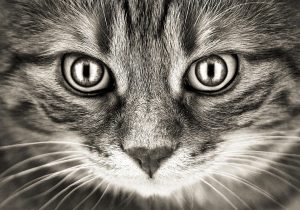
Welcoming a new cat into your home is an exciting experience, but it also comes with the responsibility of ensuring their health and well-being. A significant part of this responsibility involves understanding the nutritional needs of your feline friend. This guide aims to provide new cat owners with actionable advice and tips for feeding their cats and ensuring their optimal health.
Understanding Feline Nutrition
Cats are obligate carnivores, meaning their diet must primarily consist of meat. Unlike omnivores or herbivores, cats have specific dietary requirements that must be met to ensure their health. Understanding these needs is crucial for any cat owner.
Essential Nutrients
- Protein: Cats require a high-protein diet. Animal-based proteins like chicken, turkey, and fish are excellent sources.
- Fats: Fats provide energy and support various bodily functions. Omega-3 and Omega-6 fatty acids are especially important for skin and coat health.
- Taurine: An essential amino acid for cats, taurine is crucial for heart health, vision, and reproduction.
- Vitamins and Minerals: Vitamins like A, D, and E, as well as minerals like calcium and phosphorus, are vital for overall health.
- Water: Hydration is key to preventing urinary tract issues and maintaining overall health.
Choosing the Right Food
When it comes to feeding your cat, the market offers a variety of options, including dry kibble, wet food, and raw diets. Each has its pros and cons, so understanding them will help you make an informed decision.
Dry Food
Dry food, or kibble, is a popular choice due to its convenience and shelf life. It can be left out for extended periods, making it ideal for cats that prefer to graze throughout the day.
- Advantages: Cost-effective, convenient, and helps with dental health by reducing tartar buildup.
- Disadvantages: Lower moisture content, which may contribute to urinary tract issues if your cat doesn’t drink enough water.
Wet Food
Wet food comes in cans or pouches and has a high moisture content, which helps with hydration.
- Advantages: Higher moisture content, often more palatable, and can prevent urinary tract issues.
- Disadvantages: More expensive, shorter shelf life once opened, and can lead to dental issues if not balanced with dry food.
Raw Diets
Raw diets involve feeding cats uncooked meat, organs, and bones. This diet aims to mimic what cats would eat in the wild.
- Advantages: High in protein, natural diet for cats, and can be tailored to individual needs.
- Disadvantages: Risk of bacterial contamination, requires careful planning to ensure balanced nutrition, and can be time-consuming and costly.
Feeding Guidelines
Understanding how much and how often to feed your cat is essential for maintaining their health and preventing obesity.
Portion Control
It’s important to follow feeding guidelines provided on the food packaging or consult with your veterinarian to determine the appropriate portion size based on your cat’s age, weight, and activity level.
Feeding Frequency
Most adult cats do well when fed twice a day. Kittens, however, require more frequent feedings due to their rapid growth and higher energy needs.
Senior cats may also have different feeding requirements, so it’s important to adjust their diet based on their specific needs.
Transitioning to a New Diet
If you plan to change your cat’s diet, it’s crucial to do so gradually to avoid gastrointestinal upset.
Steps for Transitioning
- Start by mixing a small amount of the new food with the old food.
- Gradually increase the proportion of the new food over 7-10 days.
- Monitor your cat for any signs of digestive upset, such as vomiting or diarrhea, and slow the transition if necessary.
Special Dietary Needs
Some cats may have special dietary needs due to health conditions or allergies.
Common Conditions
- Obesity: Requires a calorie-controlled diet and increased physical activity.
- Diabetes: May need a high-protein, low-carbohydrate diet.
- Kidney Disease: Often requires a diet low in phosphorus and protein.
- Food Allergies: Might require an elimination diet to identify the allergen.
Consult with your vet to create a tailored feeding plan if your cat has any of these conditions.
Common Feeding Mistakes
Avoiding common feeding mistakes can help ensure your cat’s health and well-being.
Overfeeding
Overfeeding is a leading cause of obesity in cats, leading to numerous health issues. Stick to recommended portion sizes and avoid excessive treats.
Feeding a Dog Food
Never feed your cat dog food. Cats have specific nutritional needs that dog food cannot meet, including higher protein levels and essential nutrients like taurine.
Conclusion
Feeding your cat a balanced and nutritious diet is crucial for their overall health and longevity. By understanding their nutritional needs, choosing the right food, and following proper feeding guidelines, you can ensure your feline friend leads a happy and healthy life. Always consult with your veterinarian if you’re unsure about your cat’s dietary needs or have concerns about their health.
#ChatGPT assisted in the creation of this article.







